Pruning plants in NE Ohio can feel overwhelming, especially with unpredictable weather and the wide variety of trees and shrubs in local landscapes. But with the right approach, you can keep your yard healthy, beautiful, and ready for every season. This Northeast Ohio pruning guide will help you understand when, what, and how to prune, plus expert care tips tailored for homeowners.
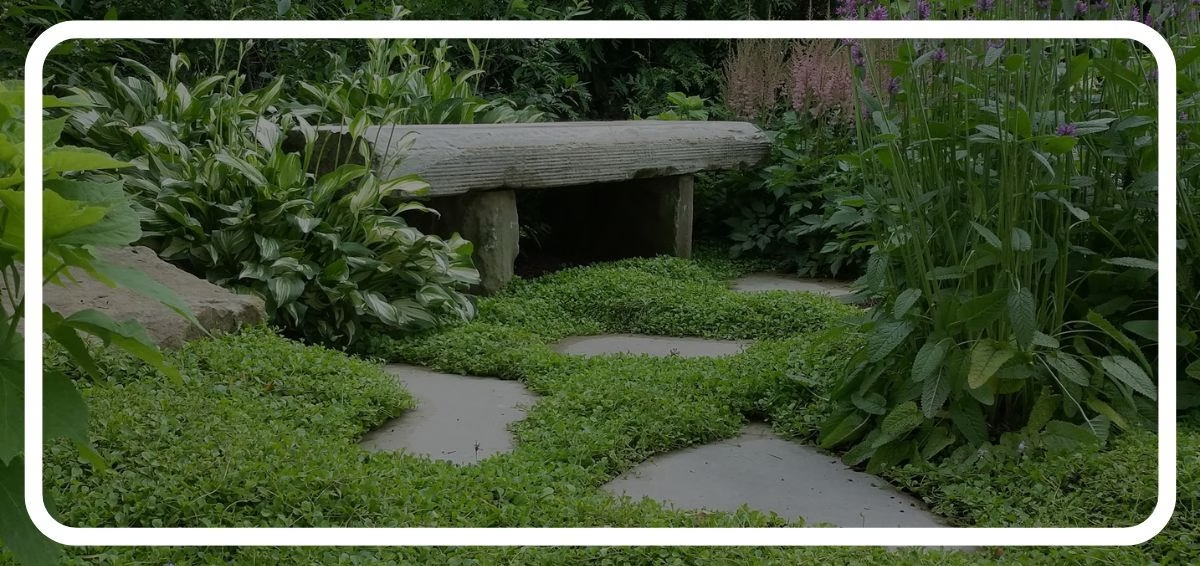
Why does pruning matter in Northeast Ohio?
Pruning does more than tidy your yard. It’s essential for plant health, structure, and longevity.
- Removes dead, diseased, or damaged wood to stop pests and decay.
- Improves air flow and sunlight for stronger growth and fewer fungal issues.
- Encourages more flowers and fruit on shrubs and trees.
- Controls size and keeps paths, windows, and driveways clear.
- Rejuvenates older shrubs for a healthier, better-looking plant.
Think of pruning as part of your routine plant care. It helps them grow stronger and look better year after year.
Step 1: Know Your Northeast Ohio Plants
Not all plants need the same pruning methods or timing. Here are common categories:
Shrubs
- Mounding shrubs (spirea, potentilla): Lightly trim outer edges and thin interior branches.
- Upright growers (forsythia, lilac): Thin older stems and trim tops to control height.
- Spreading shrubs (juniper, cotoneaster): Trim edges to contain spread and remove upward-growing branches.
- Vining/climbing shrubs (climbing hydrangea): Prune regularly to maintain shape and encourage blooms.
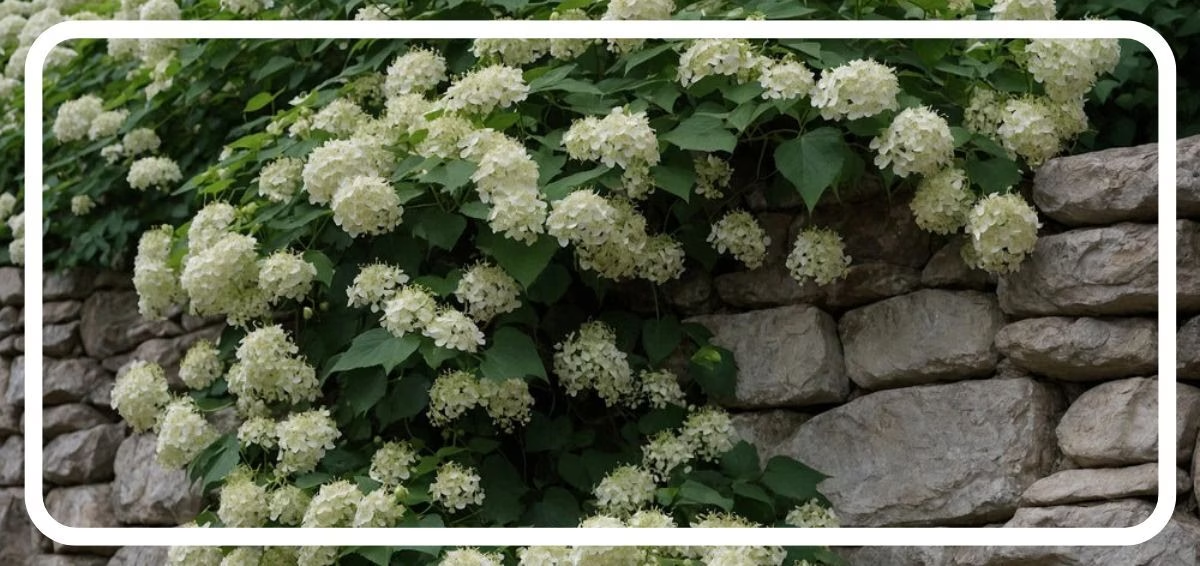
Deciduous Trees
- Maple, oak, dogwood, redbud: Remove suckers, water sprouts, and crossing branches. Focus on strong branch angles (45–60°) for stability.
Evergreen Trees
- Spruce, fir, pine, arborvitae, yew, juniper: Remove dead or damaged branches. Avoid heavy pruning into old wood, especially for pines and junipers.
Hydrangeas
- Bigleaf, mountain, oakleaf: Prune only after flowering, and only remove dead wood.
- Smooth, panicle: Prune in late fall or early spring (these bloom on new wood).
Fruit Trees
- Apple, cherry, pear: Prune in late winter or early spring for structure and to remove damaged wood.
Step 2: Gather the Right Tools
The right tools make pruning easier and safer:
- Hand pruners — for branches up to ¾ inch thick.
- Lopping shears— for cuts up to 1.5 inches.
- Pruning saw— for larger branches or tight spaces.
- Pole saw pruner— for higher branches.
- Hedge shears— for light shaping only.
- Gloves & safety glasses— to ensure that you are protected.
- Sanitizer— for cleaning tools between cuts to prevent the spread of disease
Pro Tip: Always use sharp, clean tools. Dull blades crush stems and invite disease.
Step 3: Master the Basic Pruning Techniques
Pruning isn’t just about where and when to cut your plants; it’s about knowing how to cut them correctly:
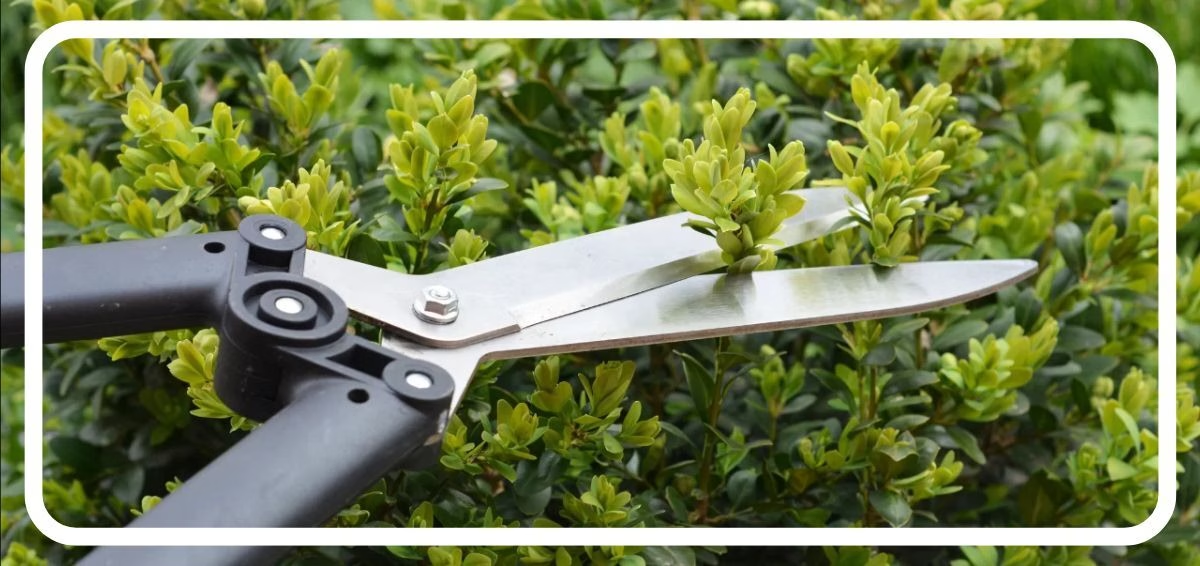
- Heading cuts: Trim just above a bud facing the direction you want new growth.
- Thinning cuts: Remove entire branches at the base or at a lateral branch.
- Cut at a 45° angle: Helps water run off and prevents rot.
- Avoid stubs: Cut close to the branch collar.
- Never remove more than one-third of a shrub or tree at a time.
For more on proper pruning, see the Ohio State University Extension’s pruning guide.
Step 4: When to Prune in Northeast Ohio
Timing is everything when it comes to pruning your plants. With Ohio’s freeze/thaw cycles, lake effect snow, and humid summers, proper timing ensures healthy recovery.
Spring Pruning
- Best for: Summer-blooming shrubs (spirea, Rose of Sharon), most evergreens, fruit trees.
- Why? Dormant plants heal quickly, and you won’t remove flower buds.
Summer Pruning
- Best for: Light shaping and removing dead or damaged branches.
- Why? Good for slowing vigorous growth, especially on fruit trees.
Fall Pruning
- Best for: Some evergreens and shrubs that bloom on new wood.
- Caution: Avoid heavy pruning in late summer/fall—new growth may not harden before winter.
Winter Pruning
- Best for: Most hardwood trees and shrubs.
- Why? Plants are dormant, pests are less active, and the structure is easier to see.
Quick Reference Table:
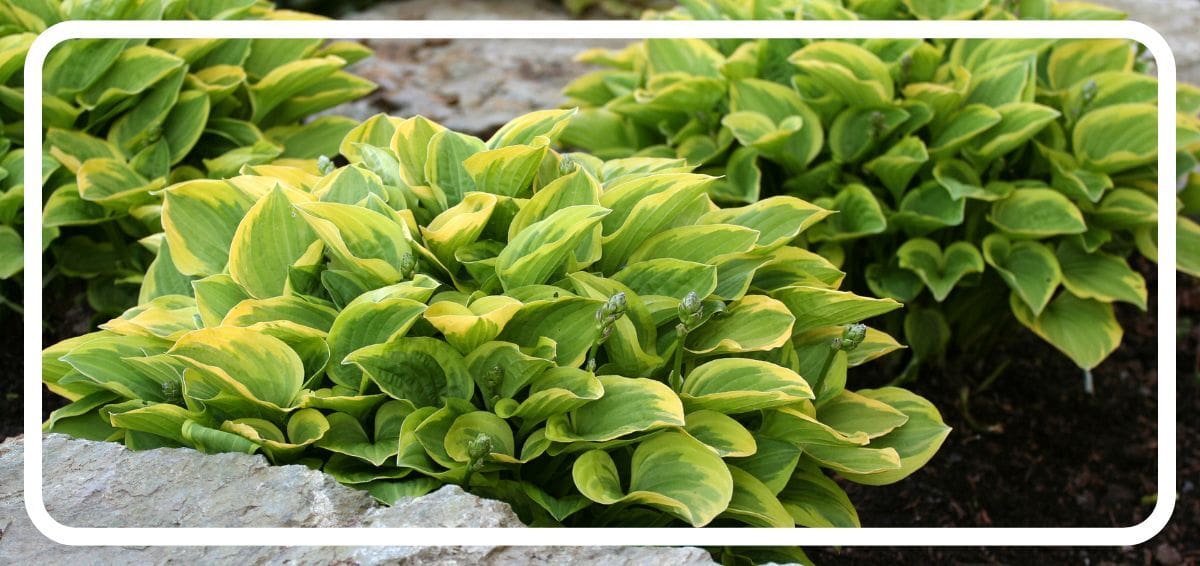
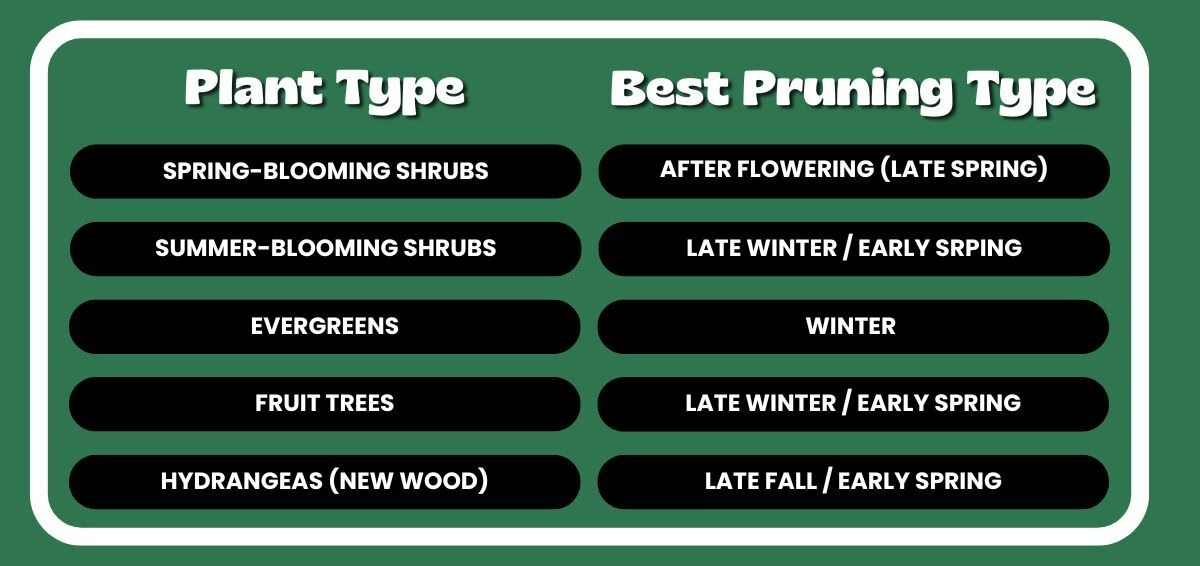
Step 5: Avoid Common Pruning Mistakes
- Pruning at the wrong time: Leads to fewer blooms or winter damage.
- Improper cuts: Too close to the trunk or leaving stubs causes decay.
- Over-pruning: Removing more than one-third of a plant causes stress and slows recovery.
- Shearing into balls: Hollows out the center and reduces health.
- Topping trees: Weakens structure and invites disease.
Step 6: Post-Pruning Plant Care
After pruning, give your plants extra care:
- Water deeply after major pruning or during dry spells.
- Fertilize with a balanced, slow-release product about 2 weeks after.
- Mulch 2–3 inches around the base (not touching stems).
- Monitor for pests/disease, especially after fresh cuts.
- Lightly trim new growth to encourage branching.
Healthy, well-pruned plants reward you with more blooms, fruit, and beauty.
When Should I Call a Professional?
Some pruning jobs are best left to the pros, especially large trees or mature shrubs. The team at Lifestyle Landscaping has the experience and tools to keep your landscape looking its best.
For bigger projects, our Landscape Design & Installation experts can help you reimagine your outdoor space.
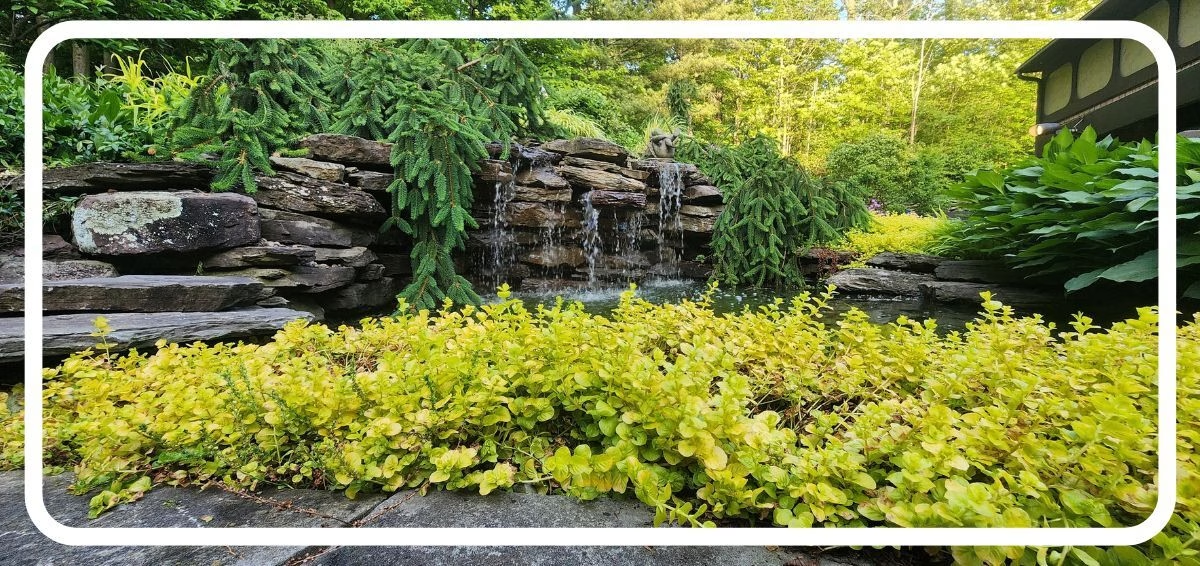

Get a Pruning Plan for Your Yard
Pruning plants in Northeast Ohio doesn’t have to be complicated. With the right timing, tools, and techniques, you can keep shrubs, trees, and flowers healthy all year long. By following this Northeast Ohio pruning guide, homeowners can keep landscapes thriving through every season.
Ready to give your yard expert care? Contact Lifestyle Landscaping for all your pruning and landscape needs. Our team is here to help your Northeast Ohio garden thrive!
Looking for more plant care tips? Explore our blog for seasonal advice, design inspiration, and expert guidance tailored to local homeowners.
